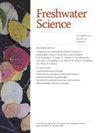美国马里兰州克拉克斯堡20年分布式雨水管理监测郊区发展的经验教训
IF 1.6
4区 环境科学与生态学
Q3 ECOLOGY
引用次数: 15
摘要
城市发展是溪流生态系统的一个众所周知的压力源,对负责减轻其影响的管理者来说是一个挑战。在过去的20年里,对美国马里兰州蒙哥马利县的5个流域的流量、水质、地貌和底栖生物群落进行了监测。本研究综合了对研究区域监测工作的多项研究,并对最近的监测数据进行了新的分析,以记录从监测中吸取的主要经验教训。监测流域包括一个森林控制区、一个具有集中雨水管理的城市控制区和3个郊区处理流域,其特点是低影响开发和高密度的以渗透为重点的雨水设施分布在整个流域。在开发前、施工期间和开发后对处理流域进行监测。开始监测是为了告知研究区域内雨水和不透水覆盖范围的适应性管理,重点是分布式雨水管理的影响。我们的综合结果表明,与集中式雨水管理相比,分布式雨水管理在许多方面都是有利的。分布式雨水基础设施的水文效益更大,表明有能力减少径流量和峰值流量,对于小风暴,有能力复制开发前的条件。在处理流域的施工阶段,基流暂时增加。水质效益好坏参半,基流硝酸盐浓度下降,但硝酸盐出口变化有限,开发后比电导增加。在处理流域的施工过程中发生了实质性的地形变化,包括河岸带内的变化,尽管有河岸缓冲区保护。生态监测表明,尽管生物完整性指数在某些情况下有所回升,但敏感的底栖大型无脊椎动物家族在处理流域并没有完全恢复。从这一综合中吸取的经验教训强调了跟踪河流健康的多个指标和考虑过去土地使用的重要性,以及在流域内分布更多的雨水设施是有益的,但不能减轻所有城市压力对水生生态系统的影响。本文章由计算机程序翻译,如有差异,请以英文原文为准。
Lessons learned from 20 y of monitoring suburban development with distributed stormwater management in Clarksburg, Maryland, USA
Urban development is a well-known stressor for stream ecosystems, presenting a challenge to managers tasked with mitigating its effects. For the past 20 y, streamflow, water quality, geomorphology, and benthic communities were monitored in 5 watersheds in Montgomery County, Maryland, USA. This study presents a synthesis of multiple studies of monitoring efforts in the study area and new analysis of more recent monitoring data to document the primary lessons learned from monitoring. The monitored watersheds include a forested control, an urban control with centralized stormwater management, and 3 suburban treatment watersheds featuring low-impact development and a high density of infiltration-focused stormwater facilities distributed across the watershed. Treatment watersheds were monitored before development, during construction, and after development. Monitoring was initiated to inform adaptive management of stormwater and impervious cover limits within the study area, with a focus on the impacts of distributed stormwater management. Results from our synthesis indicate that distributed stormwater management is advantageous compared with centralized stormwater management in numerous ways. Hydrologic benefits were greater with distributed stormwater infrastructure, demonstrating the ability to mitigate runoff volumes and peak flows and, for small storms, replicate predevelopment conditions. Baseflow temporarily increased during the construction phase in the treatment watersheds. Water-quality benefits were mixed, with declines in baseflow nitrate concentrations but limited changes to nitrate export and increases in specific conductance after development. Substantial topographic changes occurred during construction in the treatment watersheds, including changes within the riparian zone, despite riparian buffer protections. Ecological monitoring indicated that even though index of biotic integrity scores rebounded in some cases, sensitive benthic macroinvertebrate families did not fully recover in the treatment watersheds. Lessons learned from this synthesis highlight the importance of tracking multiple indicators of stream health and considering past land use and that more stormwater facilities distributed across the watershed is beneficial but cannot mitigate the effects of all urban stressors on aquatic ecosystems.
求助全文
通过发布文献求助,成功后即可免费获取论文全文。
去求助
来源期刊

Freshwater Science
ECOLOGY-MARINE & FRESHWATER BIOLOGY
CiteScore
4.10
自引率
0.00%
发文量
49
审稿时长
6-12 weeks
期刊介绍:
Freshwater Science (FWS) publishes articles that advance understanding and environmental stewardship of all types of inland aquatic ecosystems (lakes, rivers, streams, reservoirs, subterranean, and estuaries) and ecosystems at the interface between aquatic and terrestrial habitats (wetlands, riparian areas, and floodplains). The journal regularly features papers on a wide range of topics, including physical, chemical, and biological properties of lentic and lotic habitats; ecosystem processes; structure and dynamics of populations, communities, and ecosystems; ecology, systematics, and genetics of freshwater organisms, from bacteria to vertebrates; linkages between freshwater and other ecosystems and between freshwater ecology and other aquatic sciences; bioassessment, conservation, and restoration; environmental management; and new or novel methods for basic or applied research.
 求助内容:
求助内容: 应助结果提醒方式:
应助结果提醒方式:


